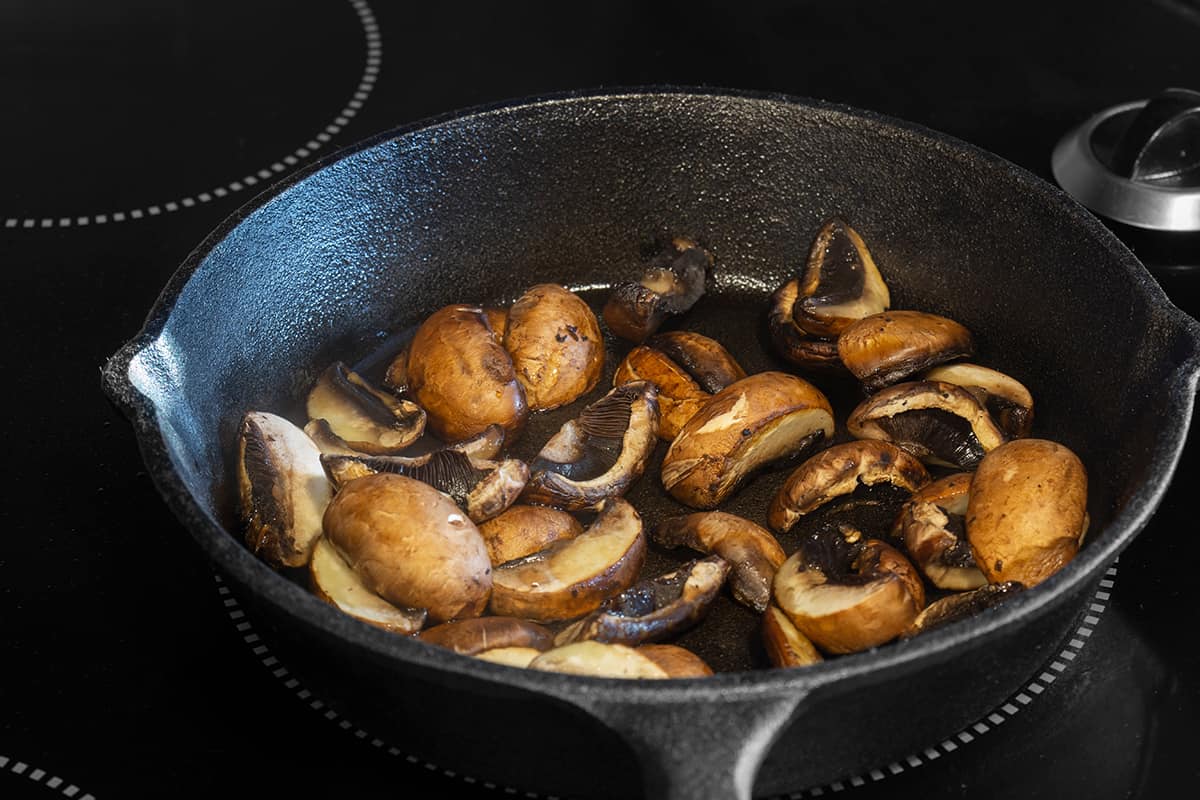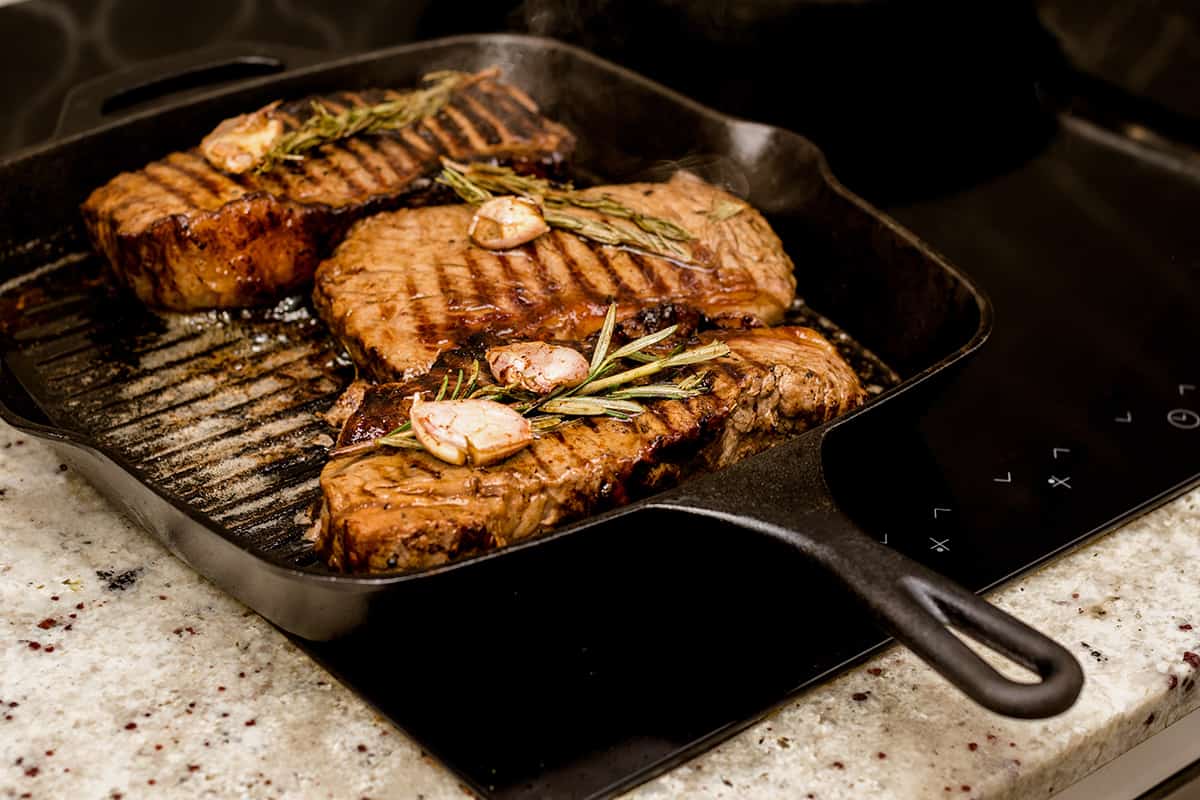The beauty and sleek elegance of glass top stoves make them a preferred choice for many homeowners. Their seamless look, paired with their easy-to-clean surface, brings a modern touch to any kitchen. However, the use of cast iron cookware poses a risk to these stoves, often leading to scratches or even cracks. Despite their robust nature, cast iron pans can cause significant damage if not used properly.
To protect your glass top stove from cast iron, you can:
- Use heat diffusers to distribute the heat evenly and protect the surface.
- Opt for enameled cast iron cookware, which is less likely to scratch the surface.
- Always lift, not slide, your cookware to prevent scratches.
- Regularly clean your stove to eliminate any trapped particles that might scratch the surface.
This article will provide an exploration into the subject, covering the potential risks of using cast iron, ways to mitigate these risks, and what to do if damage occurs.
Cast Iron and Glass Top Stoves

Glass top stoves bring a contemporary look to your kitchen, combining style with functionality. They’re sleek, easy to clean, and energy-efficient. Despite their many advantages, they’re not invincible.
Cast iron cookware, celebrated for its superior heat retention and versatile cooking abilities, can inadvertently wreak havoc on these stovetops if not handled with care.
Potential Damage from Cast Iron Pans
While cast iron pans are sturdy and long-lasting, they can be a formidable foe to the smooth surface of your glass top stove. The primary risk comes from scratches or even cracks that might result from sliding or dropping these heavy pots and pans onto the stove.
However, less obvious damage can occur from the uneven heating of cast iron, potentially causing thermal shock and leading to fractures in the glass. Furthermore, the rough texture of cast iron, especially if not well-seasoned, can scratch your stove, leaving unsightly marks that are difficult to remove.
Why Cast Iron can be Hazardous to Glass Top Stoves
Glass, despite being toughened for stovetops, is still relatively delicate. It can withstand high temperatures but can crack under sudden temperature changes or physical impact.
On the other hand, cast iron is a durable, heavy material known for its excellent heat retention. This attribute, while great for cooking, can be problematic for glass-top stoves. The concentrated heat at the base of the pan can cause overheating of the stove’s particular spot leading to potential cracks.
Also, due to its weight, dropping or even roughly placing a cast iron pan can result in chips or cracks on the glass surface.
Can You Use Cast Iron on Glass Top Stoves?
The marriage of cast iron and glass top stoves is a topic of debate among homeowners and culinary enthusiasts. Some say it’s an absolute no, while others believe it’s possible with careful handling. Understanding this controversy will help you make an informed decision and learn how to handle cast iron on your glass top stove safely.
Is it Completely Off-limits?
Many people believe that cast iron should never come into contact with glass top stoves, given the potential risks discussed earlier. There are concerns about scratching the stove’s surface, the uneven distribution of heat causing potential damage, and the weight of cast iron leading to possible cracking of the glass. However, it’s worth noting that these risks are mainly due to improper use of cast iron cookware.
With careful handling, it is indeed possible to use cast iron on a glass-top stove without causing damage. You should always avoid sliding the cookware around the stove, as this can cause scratches.
Instead, lift your pots and pans when you need to move them. Also, be aware of the heat settings you’re using. High heat can lead to overheating of the stove’s surface, which could potentially cause cracks. Thus, it’s recommended to use medium or low heat when cooking with cast iron.
Manufacturer Recommendations
Many manufacturers of glass top stoves caution against the use of cast iron cookware, primarily because of the potential for physical damage. The heavyweight and rough texture of the cookware can indeed scratch or even crack the glass surface if not handled with care.
However, some manufacturers state that it’s okay to use cast iron on their glass top stoves as long as certain precautions are taken. These precautions include lifting the cookware when moving it and ensuring that the cookware’s bottom is clean and smooth to prevent scratches.
Guidelines to Safely Use Cast Iron on Glass Top Stoves

The versatility and unmatched heat retention of cast iron cookware make it a cherished item in many kitchens. However, using these pots and pans on your glass-top stove demands careful handling.
Choosing the Right Cast Iron Cookware for Your Stove
Choose cookware with a flat bottom, as it sits better on the flat surface of the stove and promotes even heat distribution. Avoid using old or antique cast iron pans that might have a warped or rough bottom, as these can scratch your glass top. Enameled cast iron pans, which have a smooth porcelain coating, are a good alternative because they are less likely to cause scratches.
Avoiding Drops and Slides
Always lift your pots and pans instead of sliding them around. When placing your cookware onto the stove, do so gently to avoid causing any chips or cracks. This also applies when removing the cookware from the stove.
Maintaining the Right Temperature
Cast iron cookware is excellent at retaining heat, which means it stays hotter for longer. On a glass top stove, this could potentially lead to overheating, which might cause cracks or shattering.
Avoiding Trapped Particles
Keeping both your stove and cookware clean can prevent unnecessary scratches. Small food particles or dirt trapped between the cast iron and the glass can act as an abrasive, scratching the surface when the cookware is moved.
What to Do if Your Glass Top Stove is Damaged
No matter how careful we are, accidents happen. If your glass top stove gets damaged from a cast iron pot or pan, it’s essential to know what steps to take next. From assessing the damage to exploring repair or replacement options, this section provides valuable guidance on how to handle such unfortunate situations.
Scratches vs. Cracks
The first step after noticing damage on your glass top stove is to assess the severity. If it’s a scratch, you might be able to minimize its visibility or even remove it, depending on its depth. There are several scratch removal kits available on the market designed for glass stoves. These often include a polishing compound and a pad for application. Always make sure to follow the manufacturer’s instructions carefully.
Cracks, on the other hand, are a more serious issue. They can affect the stove’s functionality and pose potential safety risks. Cracks can allow moisture to seep in, potentially causing electrical shorts. Moreover, the heat might not distribute evenly across the surface, affecting your cooking. If your stove has a crack, it’s highly recommended to stop using it and consult a professional.
Professional Repair vs. DIY
If the damage is beyond a superficial scratch, it’s often a good idea to seek professional help. Trying to fix a cracked stove yourself can lead to further damage and potential safety risks. An experienced technician can assess the severity of the crack, the potential risks it poses, and whether a repair is possible or a replacement is necessary.
That said, some minor repairs can be done at home with the right tools and guidance. For instance, if you have a small scratch, a DIY scratch removal kit can be a cost-effective solution. Always remember that if you’re unsure about a repair, it’s best to consult a professional.






